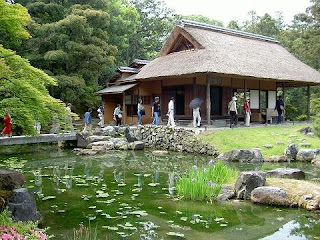

With the sukiya style?
I say the Japanese style that I made to individual preference (delight in elegant pursuits) to be made with a free-standing tea ceremony room (a house in the style of a tea-ceremony pavilion). The building which increased a tea-ceremony room-like light image came to be liked to the buildings such as another buildings by the present. I have you feel the warmth of a tree weathering naturally, and please mention the good point of the sukiya style. I can bring about wonderful space even if I do not use paint.
In addition, I wipe it, and, as well as sukiya style, please do Inui of a house once a year. I become beautiful to be able to take it for just to care for it by little trouble. And please love houses of the sukiya style















































